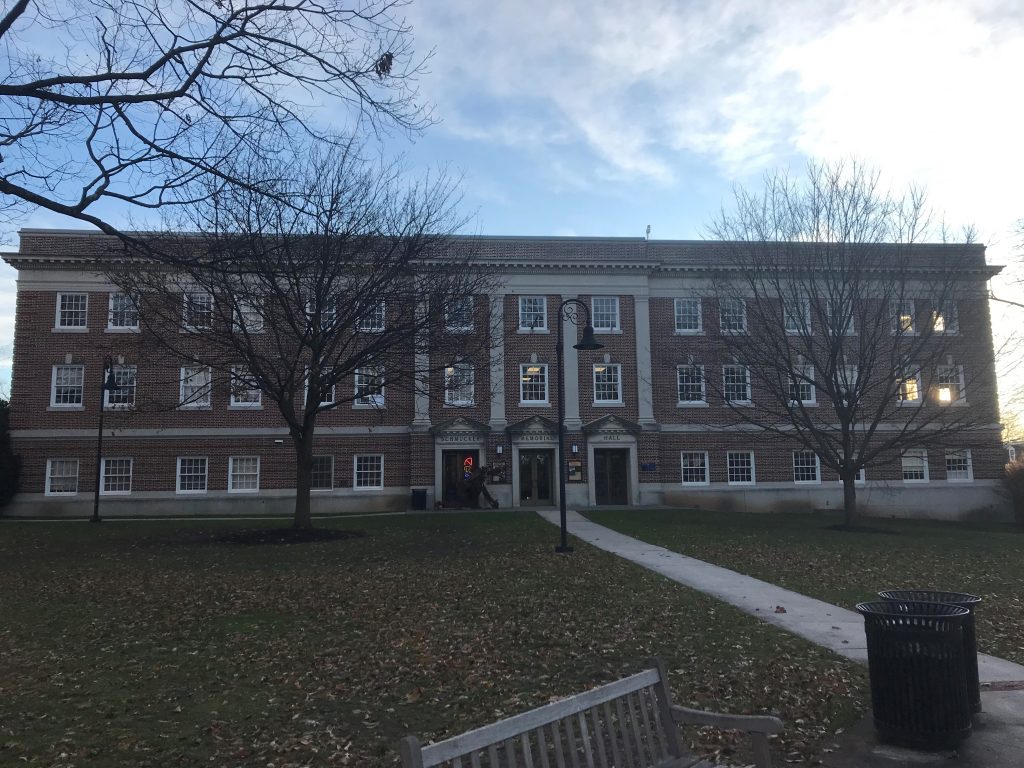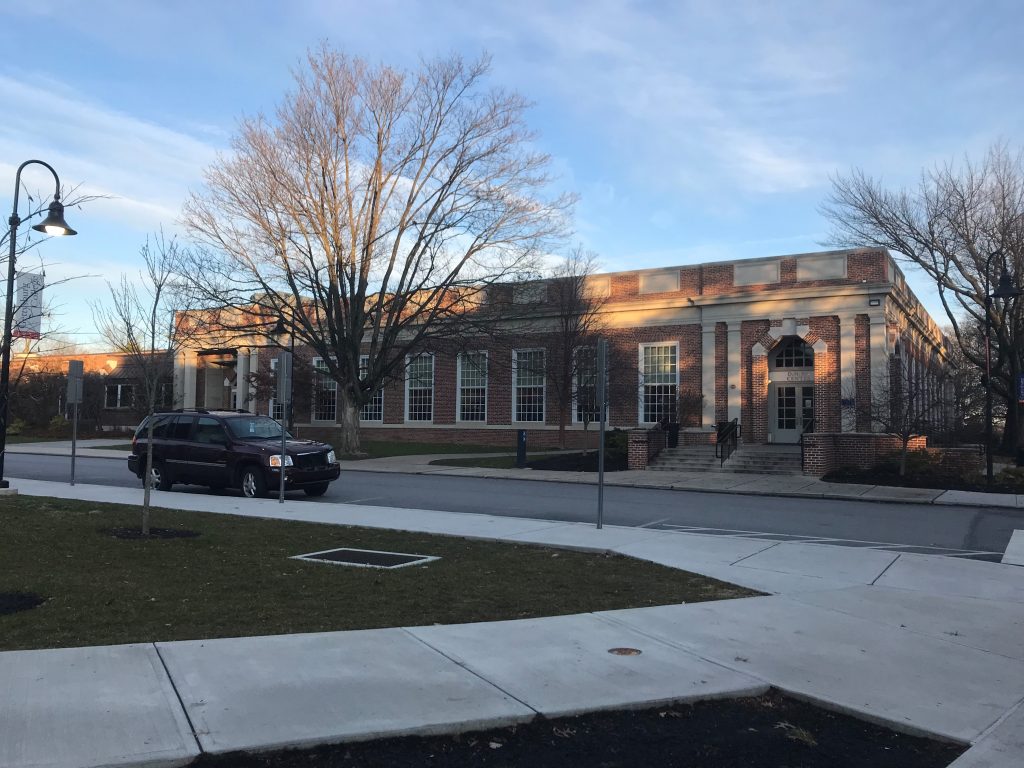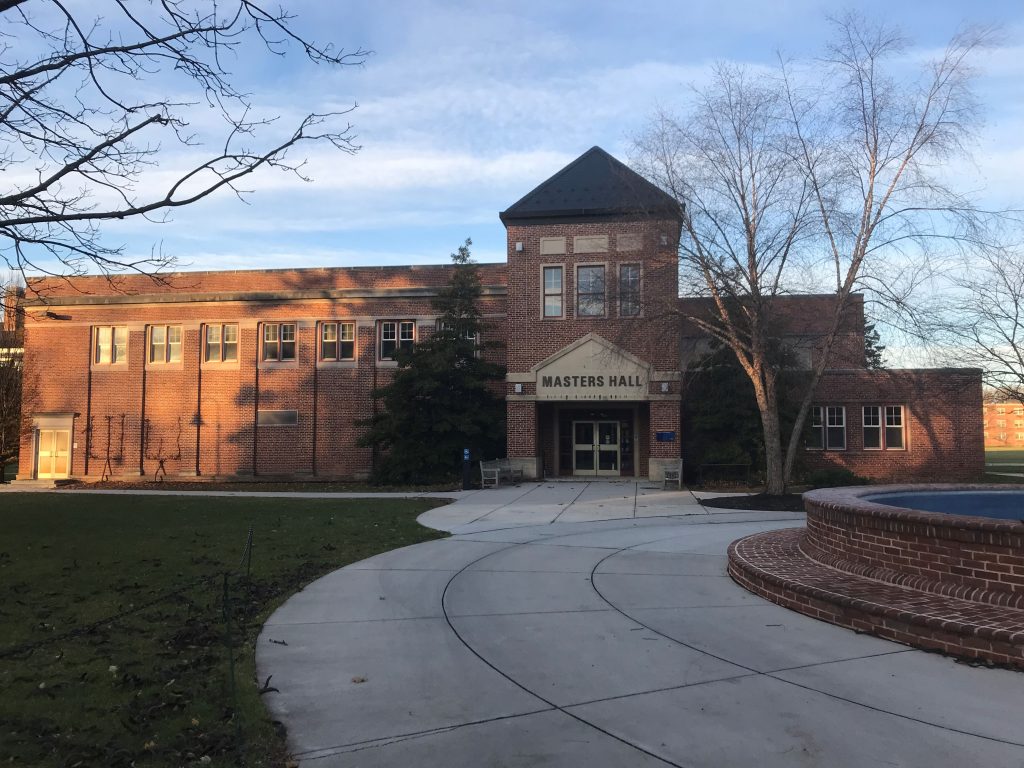Transporting food to a college campus can take a great amount of energy, which leads to increased use of fossil fuels. When fossil fuels are burned, they release greenhouse gases and contribute to global warming and climate change. By growing a portion of our food supply on campus, we could eliminate the need to transport some of our produce and reduce our environmental impact. My research explores various campus-based farming methods that could reasonably be utilized to improve food sustainability at Gettysburg College.
What agricultural techniques can we use to grow food at Gettysburg College?
Rooftop gardening, hydroponics/aquaponics, and greenhouse-based agriculture are simple methods that could be integrated at Gettysburg College to produce food and even provide students with unique research experiences.
What are Rooftop Gardens?
Rooftop gardens are exactly what they sound like: soil plots used to grow food on the roofs of buildings. These gardens double as a type of green roof, a term that describes any roof covered with plants and soil. All green roofs have the benefit of improved insulation, which can reduce the amount of energy needed for heating and cooling a building. Green roofs also filter the air, improve drainage, and can extend the lifespan of a roof by protecting it from weather and the sun.
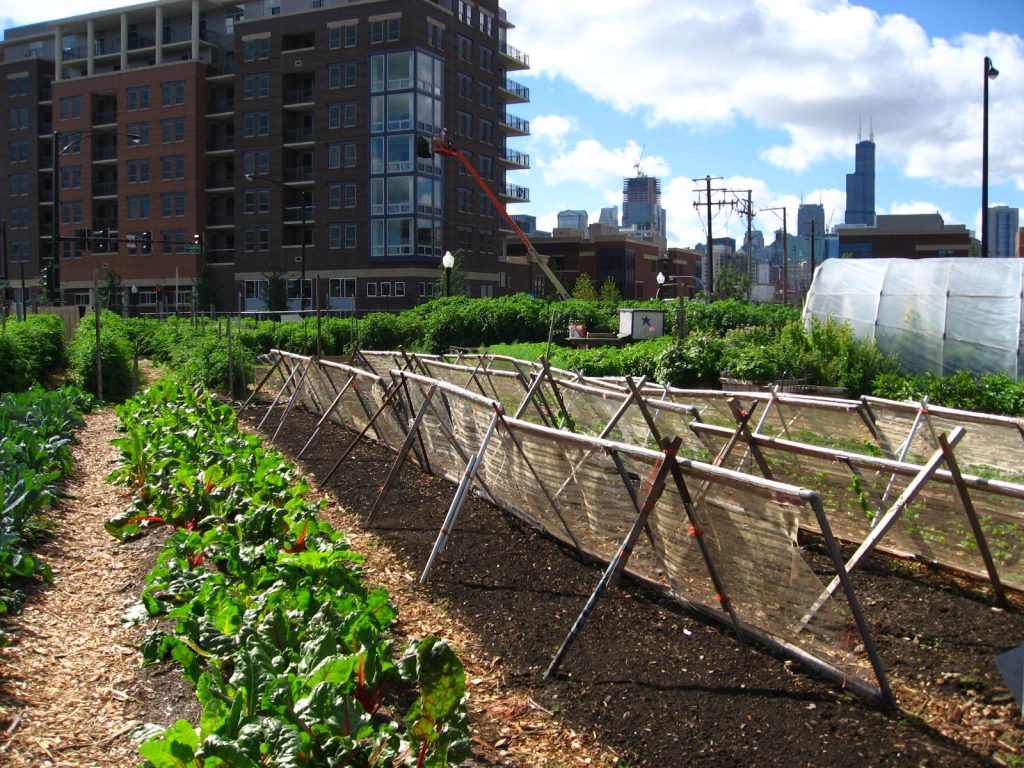
https://commons.wikimedia.org/wiki/File:New_crops-Chicago_urban_farm.jpg
Rooftop gardens provide all of the benefits of green roofs, but they have the added bonus of producing a wide variety of food! A rooftop garden at the City College of New York is reported to produce “tomatoes, tomatillos, zucchini, cucumber, broccoli, eggplant, cauliflower, jalapenos and other vegetables,” according to this article.
Did You Know?
Urban agriculture techniques (including vertical farming, rooftop gardens, and other space-saving farming methods) produce 30% of America’s food as well as 1/3 of the world’s total food supply!
What are Hydroponics and Aquaponics?
Hydroponics or hydroponic farming is the cultivation of plants without soil. In a hydroponic farming apparatus, the roots of the plants are suspended in a nutrient-rich media that circulates throughout the system (as shown in the image below).
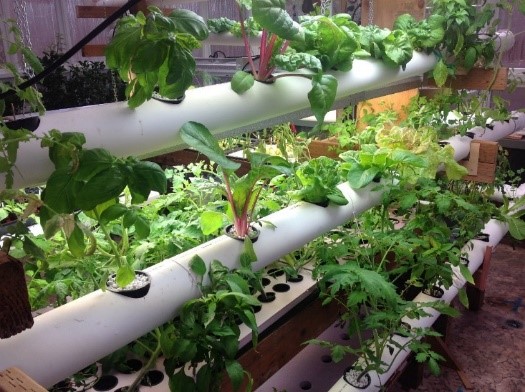
http://commons.wikimedia.org/wiki/File:Hydroponics_(33185459271).jpg
Hydroponics can be combined with aquaculture, or fish farming, in a technique called aquaponics. To see an example of an aquaponic system integrated with on-campus research, watch this video from the University of New Hampshire!
What is Greenhouse-Based Agriculture?
Of course, food can also be produced in greenhouses using traditional farming methods (i.e. growing plants in pots with soil). Greenhouses are also well-suited to support more advanced agricultural techniques, such as hydroponics, aquaponics, or vertical farming. Vertical farming plants crops in vertical rows rather than horizontal rows, and one acre of vertically-planted rows can be equivalent to four to thirty acres of traditional farmland!
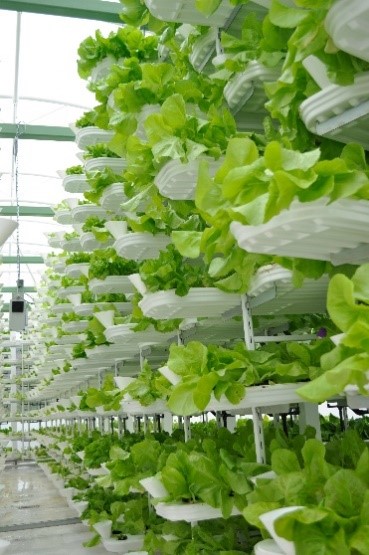
How are other schools using rooftop gardening, hydroponics, and greenhouse-based agriculture?
Rooftop Gardens: To see how green roofs can be added to an existing structure, visit this link from the Ohio State University: https://chadwickarboretum.osu.edu/our-gardens/learning-gardens/green-roof-howlett-hall-0
“After years of planning, design, and fund raising the actual installation – from the water proof membrane to beautiful plants – was completed in 14 days.”
The Ohio State University College of Food, Agricultural, and Environmental Sciences
This project shows that, with careful preparation, green roofs can be easily installed on an existing academic building! This process could be adapted for the addition of rooftop gardens.
Hydroponics/Aquaponics: At Acadia University, the Growcer Project produces fresh greens and mircogreens with high efficiency using hydroponic farming.
“Because of its sealed environment, the Growcer can produce 100 kgs of fresh greens each month year-round. It uses 95 percent less water than conventional farming and uses no herbicides or pesticides.”
Acadia University
Read the full article here: https://sustainability.acadiau.ca/news-reader/growing-local-for-a-greener-campus.html
Greenhouse-Based Agriculture: This video from the University of Nebraska-Lincoln displays their extensive, high-tech Greenhouse Innovation Center. An operation with similar goals could be established using the existing resources at Gettysburg College.
How can we apply these techniques at Gettysburg College?
Rooftop Gardens: We can retrofit flat-topped buildings with rooftop gardens. For example, Schmucker Hall, the Dining Center, and Masters Hall would be ideal candidates. Flat-roofed buildings are great for rooftop farming because of the need for students to be able to safely walk on the gardens to sow seeds and harvest crops.
Hydroponics/Aquaponics: We could add hydroponic or aquaponic systems to the greenhouse or other unutilized spaces. Even dark basements can be used for hydroponics if artificial light is provided!
Greenhouse-Based Agriculture: We can revitalize the existing greenhouse on campus. It is currently an underutilized resource, but, if given new life, the greenhouse could serve as a hub of food production as well as research in biology and environmental science.
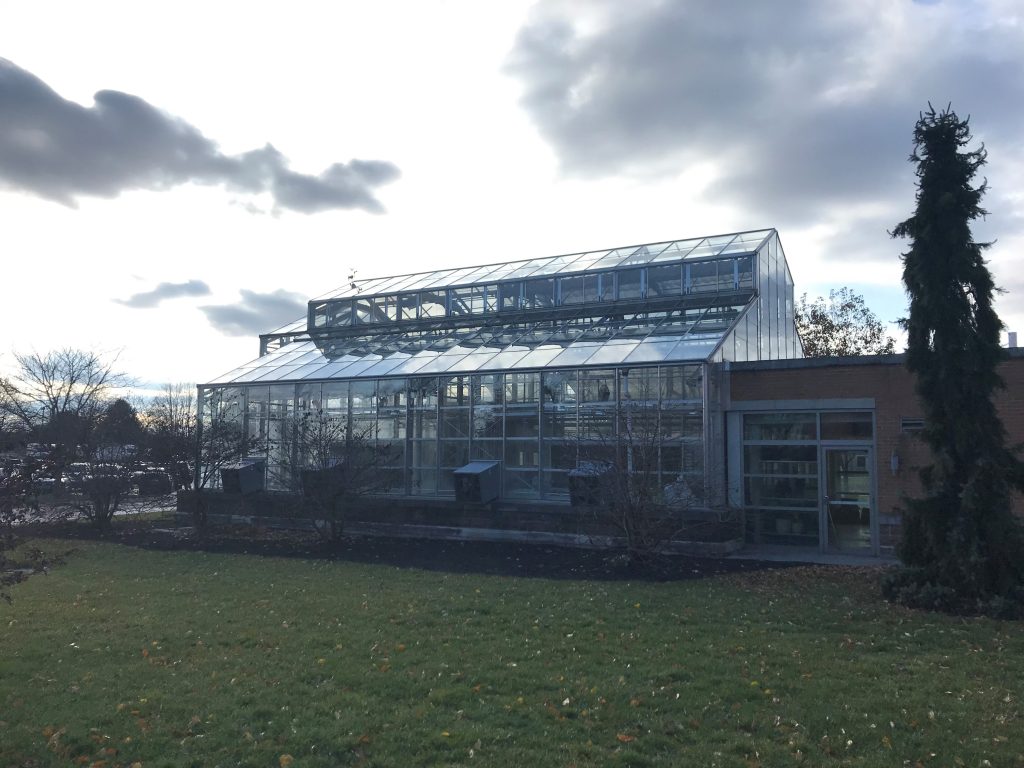
Learn More!
All of these strategies would be useful for implementation at Gettysburg College. To learn more about the programs outlined here, some initiatives at even more colleges, and the opportunity to integrate research and campus-based agriculture, read the full paper here!
(All images without citations are original to the author.)
